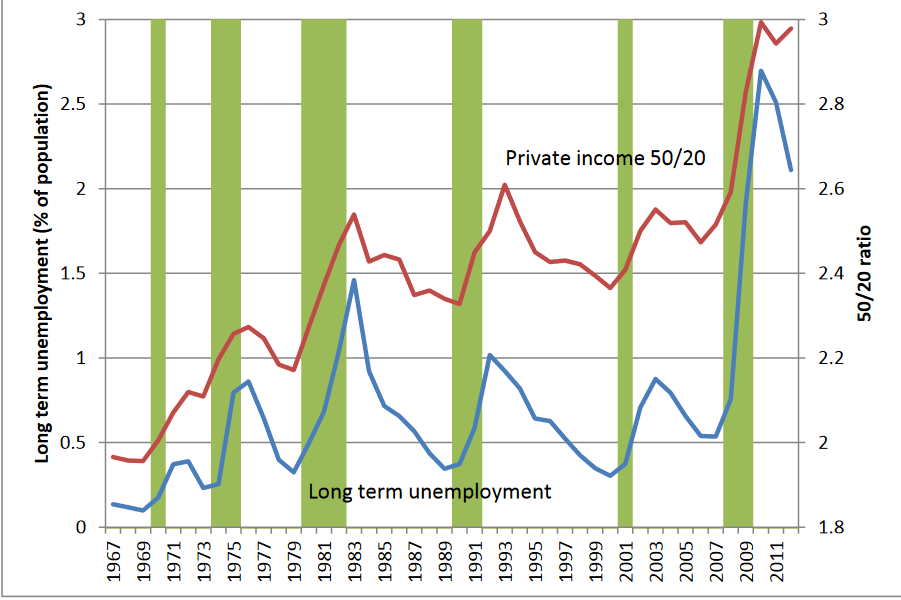By: Barry Z. Cynamon and Steven M. Fazzari
October 24, 2014
Rising inequality reduced income growth for the bottom 95 percent of the US personal
income distribution beginning about 1980. To maintain stable debt to income, this group’s
consumption-income ratio needed to decline, which did not happen through 2006, and its debtincome
ratio rose dramatically, unlike the ratio for the top 5 percent. In the Great Recession, the
consumption-income ratio for the bottom 95 percent did finally decline, consistent with tighter
borrowing constraints, while the top 5 percent ratio rose, consistent with consumption
smoothing. We argue that higher inequality and the associated demand drag helps explain the
slow recovery.

